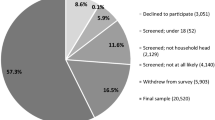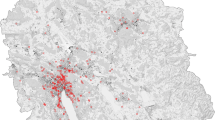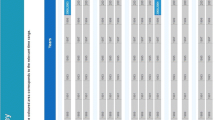Abstract
We report here on how we adapted Interactive Stated Response Methods to use in a self-completion survey of 454 California households to measure the market for electric vehicles in California. Electric vehicles are a novel product and have many features unfamiliar to consumers, in particular their home recharging capability and limited range. Reflexive techniques were designed to draw households into a deeper exploration of the lifestyle implications of electric vehicles than can be done in more typical self-completion surveys, and to stimulate key decision processes previously observed in detailed gaming interviews with 51 households. Reflexive self-completion techniques provide a middle course between typical large sample quantitative surveys and small sample, detailed gaming interviews. One of the benefits of the more intensive techniques was that participants reported finding the surveys interesting and return rates were high for a self-completion approach – over sixty percent. We review previous transportation and sociological methods which inspired our design, describe the design goals and features of our research, and summarize research results pertinent to testing the validity of our approach.
Similar content being viewed by others
References
Axhausen KW & Gärling T (1992) Activity-based approaches to travel analysis: Conceptual frameworks, models, and research problems. Transport Reviews 12: 323-341.
Bourdieu P (1977) Outline of a Theory of Practice. London: Cambridge University Press.
Bourdieu P & Wacquant L (1992) An Invitation to Reflexive Sociology. Chicago: University of Chicago Press.
Faivre d'Arcier B, Nicolas J & Lee-Gosselin M (1995) Impact of a limited range on electric vehicle use in France: Results of a simulation game survey. WCTR'95 Seventh World Conference on Transport Research (July).
Giddens A (1984) The Constitution of Society: Outline of the Theory of Structuration. Berkeley, CA: University of California Press.
Gredler M (1992) Designing and Evaluating Games and Simulations: A Process Approach. London: Kogan Page.
Greenblat CS (1981) Seeing forests and trees: Gaming-simulation and contemporary problems of learning and communication. In: Greenblat CS & Duke RD (eds.) Principles and Practices of Gaming-Simulation. Beverly Hills, CA: Sage.
Jones K (1984) Simulations versus professional educators. In: Jaques D & Tipper E (eds.) Learning for the Future with Games and Simulations. Loughborough: SAGSET, Loughborough University of Technology.
Jones PM (1979) HATS — A technique for investigating household decisions. Environment and Planning. A 11(1).
Jones PM (1983) The practical application of activity-based approaches in transport planning: An assessment. In: Carpenter. SM & Jones PM (eds.) Recent Advances in Travel Demand Analysis. Aldershot, UK: Gower.
Jones PM, Dix MC, Clarke MI & Heggie IG (1983) Understanding Travel Behaviour. Aldershot, UK: Gower.
Kurani KS & Lee-Gosselin MEH (1996) Synthesis of Past Applications. Presented at the Activity Based Forecasting Conference. New Orleans, LA. June 2, 1996.
Kurani KS, Turrentine T & Sperling D (1996) Testing electric vehicle demand in “hybrid households” using a reflexive survey. Transportation Research D 1(2).
Kurani KS et al. (1995) Household Markets for Neighborhood Electric Vehicles in California. Institute of Transportation Studies, University of California: Davis California. Report UCD-ITS-RR-95-6.
Kurani KS, Turrentine & T & Sperling D (1994a) Electric Vehicle Owners: Tests of Assumptions and Lessons on Future Behavior from 100 Electric Vehicle Owners in California. Presented at the 1994 Annual Meeting of the Transportation Research Board. Preprint no. 940984. Washington, D.C.
Kurani K, Turrentine T & Sperling D (1994b) Demand for Electric Vehicles in hybrid households: an exploratory analysis. Transport Policy 1(4): 244-256.
Lee-Gosselin MEH (1996) Scope and potential of Interactive Stated Response data collection methods, in: Household Travel Surveys: New Concepts and Research Needs, Conference Proceedings 10, Transportation Research Board, Washington DC.
Lee-Gosselin MEH (1990) The dynamics of car use patterns under different scenarios: A gaming approach. In: Jones P (ed.) Developments in Dynamic and Activity-based Approaches to Travel Analysis (pp 251-271). Aldershot, UK: Avebury.
Newsweek (1990) 1990 buyers of new cars: A research report from Newsweek. New York, N.Y.
Turrentine T (1994) Lifestyles and life politics: Towards a green car market. Ph.D. dissertation. Reprinted as: University of California, Davis: Institute of Transportation Studies, UCD-ITS-RR-94-30, 1994.
Turrentine TS, Sperling D & Kurani K (1992) Market potential of electric and natural gas vehicles. Research Report UCD-ITS-RR-92-8. Davis, CA: Institute of Transportation Studies, University of California.
Turrentine TS & Sperling D (1991) Theories of New Technology Purchase Decisions: The Case of Alternative Fueled Vehicles. Berkeley, CA: University of California Transportation Center Working Paper No. 129.
Turrentine T & Kurani KS (1995) The Household Market for Electric Vehicles: Testing the Hybrid Household Hypothesis — A Reflexively Designed Survey of New-car-buying, Multi-vehicle California Households. Report prepared for the California Air Resources Board and The California Environmental Protection Agency. Institute of Transportation Studies, University of California: Davis California. Report UCD-ITS-RR-95-5.
Author information
Authors and Affiliations
Rights and permissions
About this article
Cite this article
Turrentine, T.S., Kurani, K.S. Adapting interactive stated response techniques to a self-completion survey. Transportation 25, 207–222 (1998). https://doi.org/10.1023/A:1005083719240
Issue Date:
DOI: https://doi.org/10.1023/A:1005083719240




